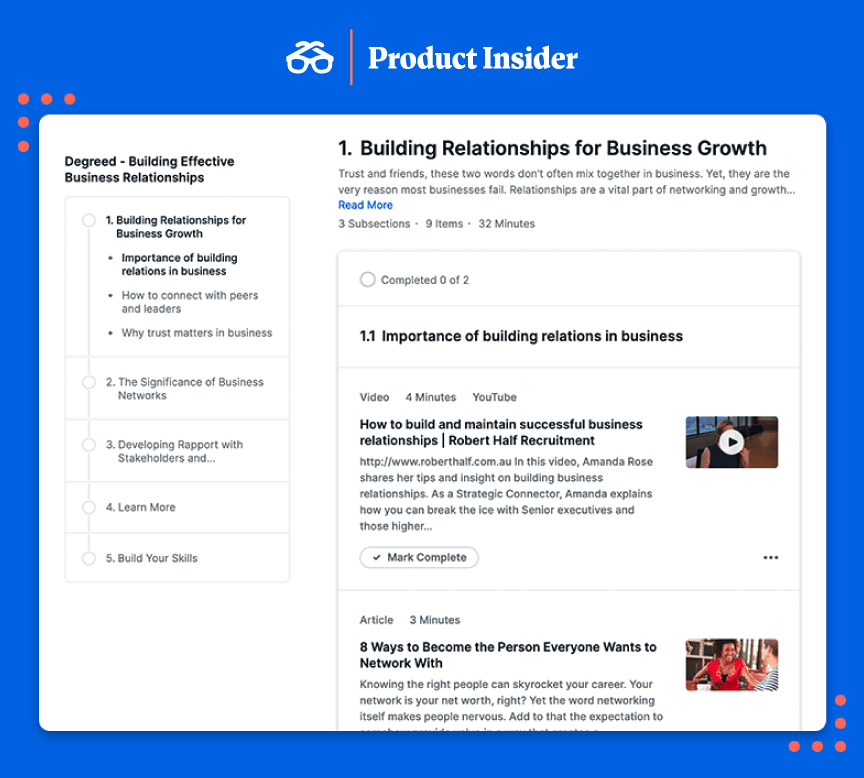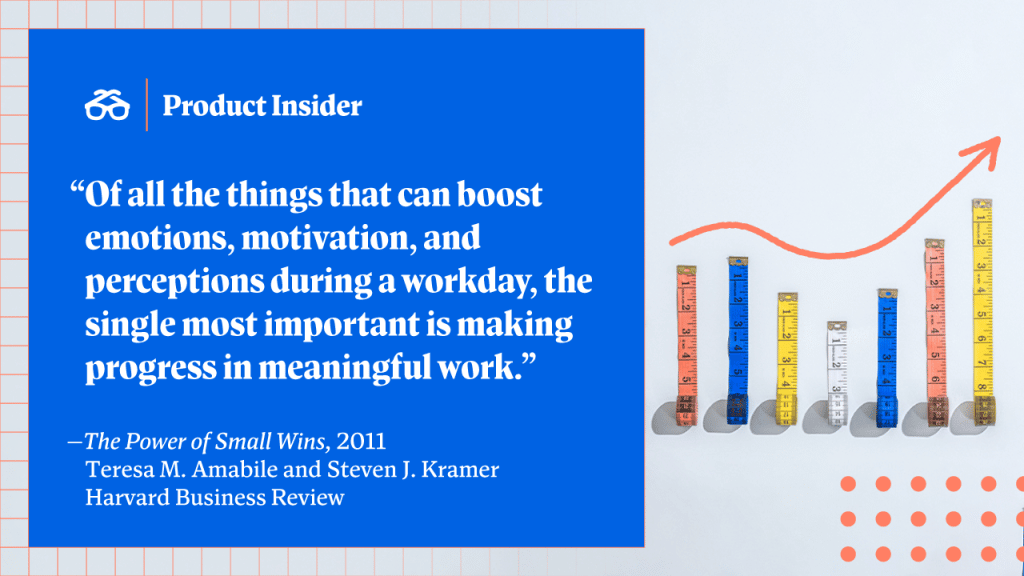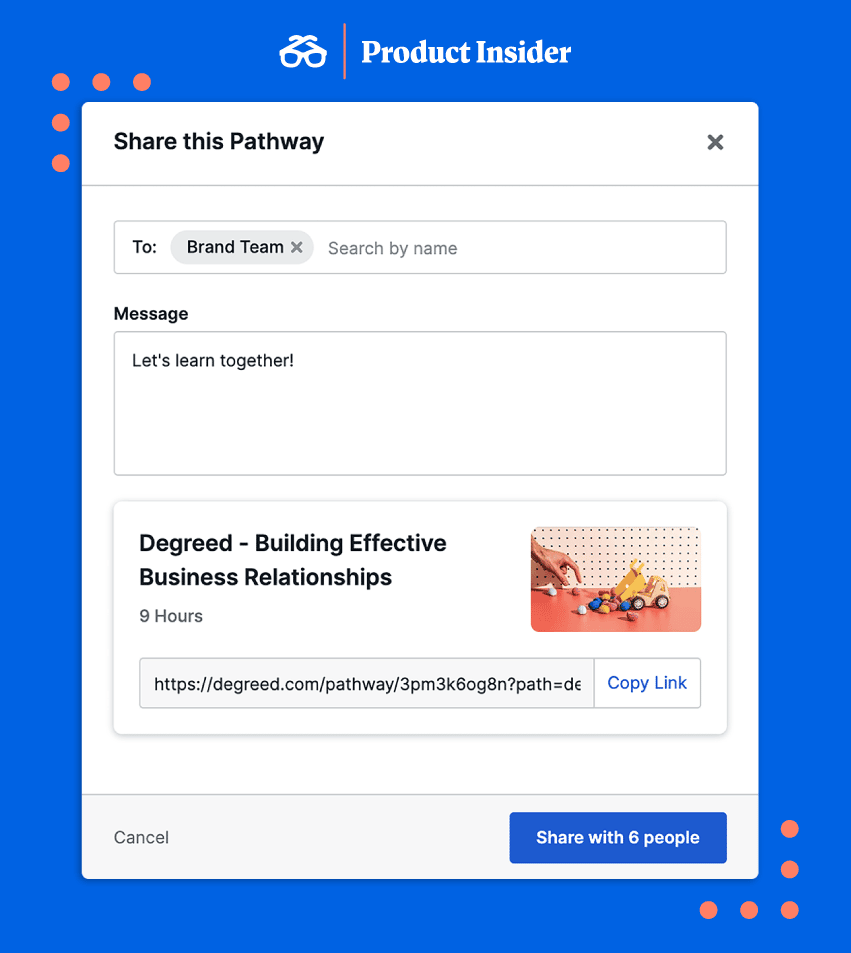One of the primary elements of learning is a sense of direction. It’s an idea that dates back centuries to Plato and was echoed more recently by John Dewey, an early psychology and education theorist. Dewey talked about the purpose of education and the importance of learning things in “an orderly, sequential way.” This idea translates to a modern-day learning map.
When you learn, you answer essential questions about what it is that you’re trying to understand including: Where should I start? How do I progress? What are the benchmarks? And what’s the destination?
These are all questions of wayfinding, going from A to B, from B to C, and all the way to Z. The term “wayfinding” concisely captures the essential role of a motivating and orienting learning map that breaks complex knowledge into digestible parts.
Learning Pathways: The New Wayfinding
Degreed Pathways are like digital descendants of the classic high school or college course syllabus. They function as flexible wayfinding tools that allow people to quickly curate resources from a wide mix of sources into cohesive learning journeys. These Pathways can stitch together content from any source, format, medium, or topic (think articles, books, quizzes, podcasts, videos, and more). With Degreed Pathways, your learning can evolve from simple task lists to comprehensive learning maps that offer direction. They tell you where to go, and they create a better user experience by encouraging you to move through content and watch your progress as you learn.
American writer Henry David Thoreau once said that “We are all schoolmasters, and our schoolhouse is the universe.” This line reflects the vision of Degreed Pathways and why they are an essential tool for modern learning. Thoreau’s words elevate the role of the learner while speaking to the immense scale of learning resources. Degreed Pathways address both of these points by empowering people to be curators and distilling learning opportunities into concise step-by-step journeys. As the universe of learning resources grows and changes more rapidly than ever before, this curation is increasingly essential. When workers find a few minutes to build their skills, they don’t have time to be overwhelmed by the quantity of possibilities.
A Sense of Progress: The Key to Motivation
Creating an infrastructure for progress is another primary goal of Degreed Pathways. Few things are more gratifying than witnessing progress of your own upskilling. For a computer programmer, it’s experiencing the small steps between writing a single line of code and building an entire website. For parents, it’s the almost daily amazement of watching a child achieve incredible feats like crawling safely down a step or drumming near-rhythmically with a spoon. With children, this progress is at once intense, joyful, and motivating. But when you’re older? Tapping into that sense of progress isn’t so easy.
Transparently, aside from a general sense of productivity and career growth, I don’t really know what my progress is. After 15 years of school and working for over a decade, I vaguely recognize that my different skills have gone up and down but I don’t clearly know which ones or by how much. Honestly, I don’t really know where my skills are and I find myself frequently surprised by my own ability (or lack thereof). Life, it turns out, doesn’t have a great sense of progress.

Degreed Pathways and many future updates will build toward the big idea of creating an infrastructure for progress. Users will see their progress through each Pathway and, subsequently, see the skills they’re building along the way. And as we continue to connect Pathways to skills, they’ll see new features highlighting unlocked opportunities.
In their essay “The Power of Small Wins,” researchers Teresa Amabile and Steven Kramer describe the “progress principle” as a key factor in workers’ success.

The researchers show that on good days, you make progress — even if that progress is small. Degreed Pathways acknowledge “minor milestones,” to ensure that people are motivated throughout the journey, not just when they finish it.
Degreed Pathways: Learning Maps with Fast and Flexible Curation
Degreed Pathways can be shared, built by anyone, and used for personal or collective learning. As an author, you can add learning resources of any type as long as they’re hosted on a web page. And since Degreed’s curation tools stretch across the web, you can include any material you find using your search engine. In addition, you can create your own videos, posts, or tasks directly within the Pathway.

These simple but powerful tools encourage not only L&D professionals, but everyone, to share their expertise and build Pathways that help others. The end result is more learning shared faster.
Today, skills expire quicker than ever. What path will you take to tomorrow’s expertise?
What got you here might not get you where you want to go. We’ll keep building tools to help you find your way and stay inspired with each step.
